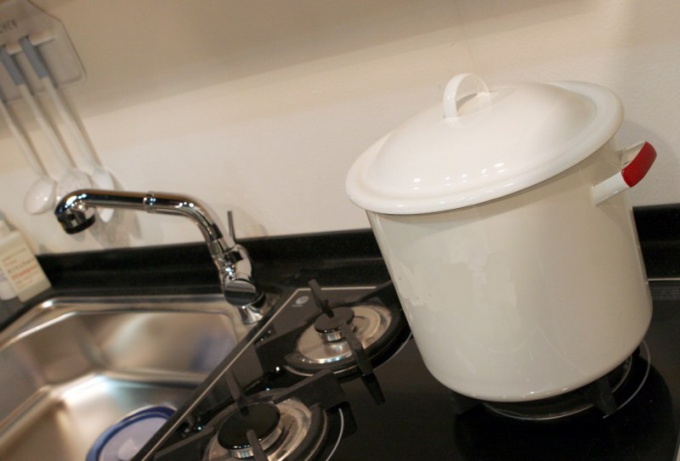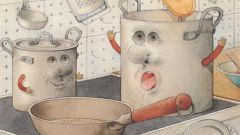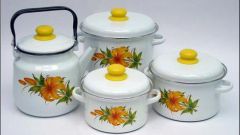You will need
- - bleach;
- - peel pears and apples;
- - baking soda;
- onion;
- - a means for washing dishes;
- soap, soda ash and silicate glue.
Instruction
1
Boil a pan with bleach, such as with popular chlorine-containing "White". At the same time bleach any towels or linens in need of washing. To clean the pan not only inside but also outside, put it in another larger dish and do the same.
2
Clean the blackened inside of kettles and pots, and boiling them in the skins of pears and apples. There's another gentle (not chemical) way is baking soda, which helps in many cases. However, you may want a stronger effect, then sprinkle the baking soda in a saucepan, cover with water and leave it for a while, then longer boil on a slow fire. Rinse the dishes. If you want, use baking soda and salt at the same time. To enhance the effect, leave the pan to soak for several hours or overnight after boiling.
3
Boil the pan with a purified follicle is a natural way of cleaning stains and burnt. But if the ware is burnt badly, this method may not help until the end. Try to add also the vinegar, but only if the pan is aluminum or cast iron, otherwise the vinegar can damage the enamel.
4
Do not clean aluminum cookware aggressive funds, in particular containing acid. Dilute in water in a large dish of soap, soda ash, and some liquid glass from a hardware store. In this solution, place the aluminum pot and simmer. Goes not only the yellowing and darkening, but the fat, cleaned the burnt areas. This method can be used for enamel products, and pans. The proportions depend on the amount of water used and the quantity of dishes you are going to clean. On average, 4-5 liters of water take one soap (grate it on a grater), 2-3 cups of soda ash and 1-2 of the tube silicate glue (the same as paper glue or liquid glass). Focus on the degree of contamination.
5
Boil the pan in a solution of dishwashing detergent (pour a little more, and not a few drops as for washing dishes). Then use a rag or sponge to remove dirt. Dishwashing detergent is very popular now, they are used for different purposes, because they are well dissolved contamination. But they are not harmless, so at the end of the pot then rinse thoroughly.
Note
Do not use abrasive powders, hard brushes and sponges to avoid scratches and damage cookware.



